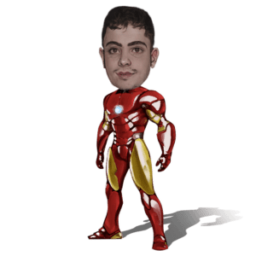The One and a Half Hitch-Kick Style of Long Jumping [2]
All long jump movements in the flight phase are simply to counteract unwanted forward rotation, whereas the take-off for each in-flight style remains the same. Coaches and their jumpers will settle on a flight style that suits the physical capabilities of the individual jumper. Men tend to use the hitch-kick simply because it is easy to develop and for the fact that they are faster and stronger than female jumpers. You must be fast to affect an efficient hitch-kick style because the jumper needs the time in the air to move his upper and lower limbs in a very rangy manner. As coaches we look for ‘big movements’ of arms and legs.
But let’s take a detailed insight at what happens at touchdown and the moment of lift from the board. The jumper has attained his/her optimal speed on the runway and is preparing to take-off. The arms are very rangy with the shoulders down so there is ‘no tension’ as he runs on to the board. A lot of coaches have likened the hitch-kick to running on to the board and then running off the board. There is no forced take-off. The take-off board is ‘kissed lightly’ as the spikes catch and are ‘dragged backwards’.
We now assume that the jumper is a left-footed take-off. At the moment of touch-down the left foot is placed nearly flat on to the board and is actively attempting to pull and drive backwards like a clawing action or attempting to kick a foot ball backwards up the runway using the heel of the take-of foot. I call this the ankle sweep back.
The left arm which is bent at 90 degrees is driving the left side of the body upwards – this arm contributes approximately 25% to the vertical impulse and is very important. The right arm at the moment of
touch-down is actively driving backwards and will continue on its backward and upward pathway until it reaches the vertical and CONTINUES to windmill forwards.
The left arm having reached a right-angled position is now straightened in front and is driven backwards as a long lever and works correspondingly with the right arm in an alternate forwards wind-milling action. The arms should be ‘long and rangy’ throughout the flight phase into the landing.
But this article is only looking at the initial stages of the flight phase of the hitch-kick. At the moment of take-off the thigh of the right leg is driven to the parallel to initiate a dynamic vertical impulse and works in tandem with that vigorous drive of the left arm – VERY IMPORTANT.
This free-leg [non-take leg] leg, once it has initiated the vertical impulse is held momentarily with the thigh parallel with the runway THEN it is STRAIGHTENED QUICKLY out to the front BEFORE being DRIVEN backwards as a LONG LEVER under the body and to the rear where it flexes at the knee joint to become a short lever.
I call this Phase 1 and is probably the most important part of the whole jump [although the other parts are equally important]. Initially, this first phase must be a wide split in order for the jumper to become balanced in the air. If he establishes a narrow base the rotation will occur and the rest of the jump will be ‘useless’. A narrow base occurs when the jumper doesn’t keep that lead thigh parallel for a short instant. In time terms I’m only talking approximately 0.05 of a second. Any longer than this and he will be unable to continue with the hitch-kick per se.
Also, the head and eyes are looking forwards and slightly upwards with the ‘neck’ in an open position. The back is straight and backside tucked in. The upper torso is vertical – this is so important at the moment of take-off.
So in summation the initial stages of the one and a half hitch-kick are so important and a great deal of specific drilled practices must be done. Use of low, flat platforms used as a coaching tool should be a pre-requisite. It is a serious matter of establishing the correct movement patterns at touch-down and take-off and should be put into place at an early stage on the learning process.
windmill
#HitchKick #Style #Long #Jumping
Will be pleased to have you visit my pages on social networking .
Facebook page here.
Twitter account is here.
Linkedin account here
Post byBedewy for info askme VISIT GAHZLY




